�
Springer Topics in Signal Processing
Volume 1
Series Editors
J. Benesty, Montreal, QC, Canada
W. Kellermann, Erlangen, Germany
Springer Topics in Signal Processing
Edited by J. Benesty and W. Kellermann
Vol. 1: Benesty, J.; Chen, J.; Huang, Y.
Microphone Array Signal Processing
250 p. 2008 [978-3-540-78611-5]
�
Jacob Benesty · Jingdong Chen · Yiteng Huang
Microphone Array
Signal Processing
123
�
Jacob Benesty
INRS-EMT, University of Quebec
800 de la Gauchetiere Ouest
Montreal, QC, H5A 1K6
Canada
Yiteng Huang
WeVoice, Inc.
9 Sylvan Dr.
Bridgewater, NJ, 08807
USA
Jingdong Chen
Bell Labs, Alcatel-Lucent
600 Mountain Ave.
Murray Hill, NJ, 07974
USA
ISBN 978-3-540-78611-5
e-ISBN 978-3-540-78612-2
DOI 10.1007/978-3-540-78612-2
Springer Topics in Signal Processing ISSN 1866-2609
Library of Congress Control Number: 2008922312
c 2008 Springer-Verlag Berlin Heidelberg
This work is subject to copyright. All rights are reserved, whether the whole or part of the material is
concerned, specifically the rights of translation, reprinting, reuse of illustrations, recitation, broadcasting,
reproduction on microfilm or in any other way, and storage in data banks. Duplication of this publication
or parts thereof is permitted only under the provisions of the German Copyright Law of September 9,
1965, in its current version, and permission for use must always be obtained from Springer. Violations
are liable to prosecution under the German Copyright Law.
The use of general descriptive names, registered names, trademarks, etc. in this publication does not imply,
even in the absence of a specific statement, that such names are exempt from the relevant protective laws
and regulations and therefore free for general use.
Coverdesign: WMXDesign GmbH, Heidelberg
Printed on acid-free paper
9 8 7 6 5 4 3 2 1
springer.com
�
Preface
In the past few years we have written and edited several books in the area of
acoustic and speech signal processing. The reason behind this endeavor is that
there were almost no books available in the literature when we first started
while there was (and still is) a real need to publish manuscripts summarizing
the most useful ideas, concepts, results, and state-of-the-art algorithms in this
important area of research. According to all the feedback we have received
so far, we can say that we were right in doing this. Recently, several other
researchers have followed us in this journey and have published interesting
books with their own visions and perspectives.
The idea of writing a book on Microphone Array Signal Processing comes
from discussions we have had with many colleagues and friends. As a con-
sequence of these discussions, we came up with the conclusion that, again,
there is an urgent need for a monograph that carefully explains the theory
and implementation of microphone arrays. While there are many manuscripts
on antenna arrays from a narrowband perspective (narrowband signals and
narrowband processing), the literature is quite scarce when it comes to sen-
sor arrays explained from a truly broadband perspective. Many algorithms
for speech applications were simply borrowed from narrowband antenna ar-
rays. However, a direct application of narrowband ideas to broadband speech
processing may not be necessarily appropriate and can lead to many mis-
understandings. Therefore, the main objective of this book is to derive and
explain the most fundamental algorithms from a strict broadband (signals
and/or processing) viewpoint. Thanks to the approach taken here, new con-
cepts come in light that have the great potential of solving several and very
difficult problems encountered in acoustic and speech applications.
This book is especially written for graduate students and research en-
gineers who work on microphone arrays. Our goal is to make the area of
microphone array signal processing theory and application available in a com-
plete and self-contained text. We attempt to explain the main ideas in a clear
and rigorous way so that the reader can have a pretty good idea of the po-
�
VI
Preface
tentials, opportunities, challenges, and limitations of microphone array signal
processing. We hope that the reader will find it useful and inspiring.
Finally, we would like to thank Christoph Baumann, Petra Jantzen, and
Carmen Wolf from Springer (Germany) for their wonderful help in the prepa-
ration and publication of this manuscript. Working with them is always a
pleasure and a wonderful experience.
Montr´eal, QC/ Murray Hill, NJ/ Bridgewater, NJ
Jacob Benesty
Jingdong Chen
Yiteng Huang
�
Contents
1
Introduction . . . . . . . . . . . . . . . . . . . . . . . . . . . . . . . . . . . . . . . . . . . . . . .
1.1 Microphone Array Signal Processing . . . . . . . . . . . . . . . . . . . . . . .
1.2 Organization of the Book . . . . . . . . . . . . . . . . . . . . . . . . . . . . . . . . .
1
1
5
7
2 Classical Optimal Filtering . . . . . . . . . . . . . . . . . . . . . . . . . . . . . . . .
7
2.1 Introduction . . . . . . . . . . . . . . . . . . . . . . . . . . . . . . . . . . . . . . . . . . . .
2.2 Wiener Filter . . . . . . . . . . . . . . . . . . . . . . . . . . . . . . . . . . . . . . . . . . .
8
2.3 Frost Filter . . . . . . . . . . . . . . . . . . . . . . . . . . . . . . . . . . . . . . . . . . . . . 16
2.3.1 Algorithm . . . . . . . . . . . . . . . . . . . . . . . . . . . . . . . . . . . . . . . . 16
2.3.2 Generalized Sidelobe Canceller Structure . . . . . . . . . . . . . 17
2.3.3 Application to Linear Interpolation . . . . . . . . . . . . . . . . . . 19
2.4 Kalman Filter . . . . . . . . . . . . . . . . . . . . . . . . . . . . . . . . . . . . . . . . . . . 21
2.5 A Viable Alternative to the MSE . . . . . . . . . . . . . . . . . . . . . . . . . . 25
2.5.1 Pearson Correlation Coefficient . . . . . . . . . . . . . . . . . . . . . . 26
2.5.2 Important Relations with the SPCC . . . . . . . . . . . . . . . . . 26
2.5.3 Examples of Optimal Filters Derived from the SPCC . . 29
2.6 Conclusions . . . . . . . . . . . . . . . . . . . . . . . . . . . . . . . . . . . . . . . . . . . . . 37
3 Conventional Beamforming Techniques . . . . . . . . . . . . . . . . . . . . 39
3.1 Introduction . . . . . . . . . . . . . . . . . . . . . . . . . . . . . . . . . . . . . . . . . . . . 39
3.2 Problem Description . . . . . . . . . . . . . . . . . . . . . . . . . . . . . . . . . . . . . 40
3.3 Delay-and-Sum Technique . . . . . . . . . . . . . . . . . . . . . . . . . . . . . . . . 41
3.4 Design of a Fixed Beamformer . . . . . . . . . . . . . . . . . . . . . . . . . . . . 46
3.5 Maximum Signal-to-Noise Ratio Filter . . . . . . . . . . . . . . . . . . . . . 49
3.6 Minimum Variance Distortionless Response Filter . . . . . . . . . . . 52
3.7 Approach with a Reference Signal . . . . . . . . . . . . . . . . . . . . . . . . . 54
3.8 Response-Invariant Broadband Beamformers . . . . . . . . . . . . . . . . 55
3.9 Null-Steering Technique . . . . . . . . . . . . . . . . . . . . . . . . . . . . . . . . . . 58
3.10 Microphone Array Pattern Function . . . . . . . . . . . . . . . . . . . . . . . 61
3.10.1 First Signal Model . . . . . . . . . . . . . . . . . . . . . . . . . . . . . . . . . 62
3.10.2 Second Signal Model . . . . . . . . . . . . . . . . . . . . . . . . . . . . . . . 64
�

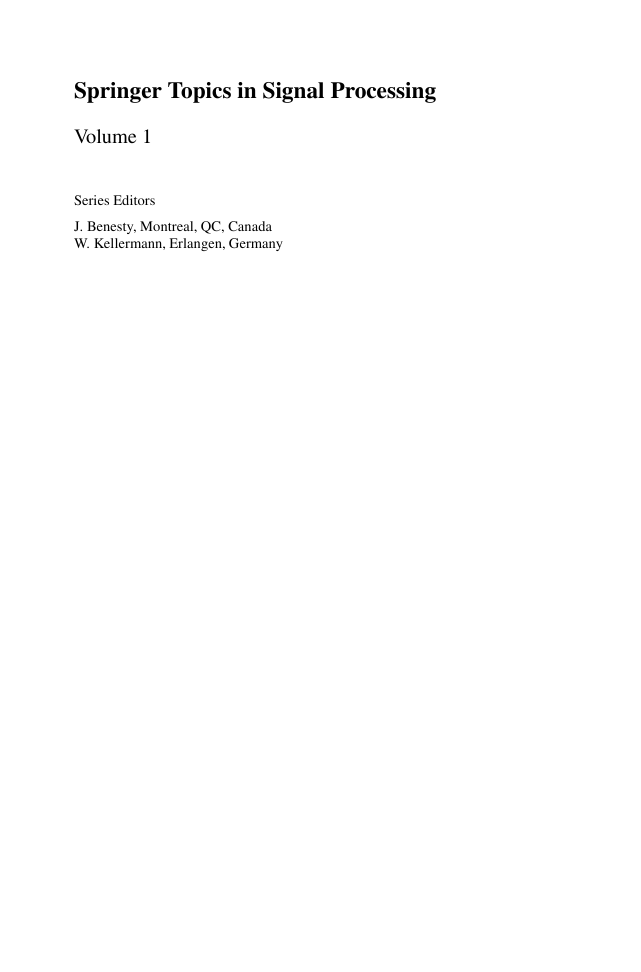
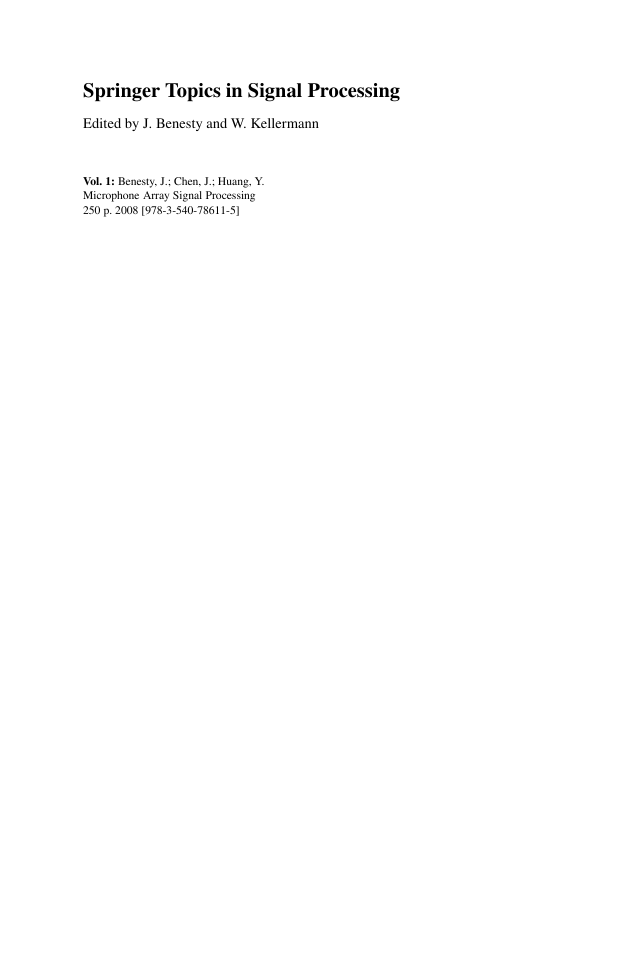
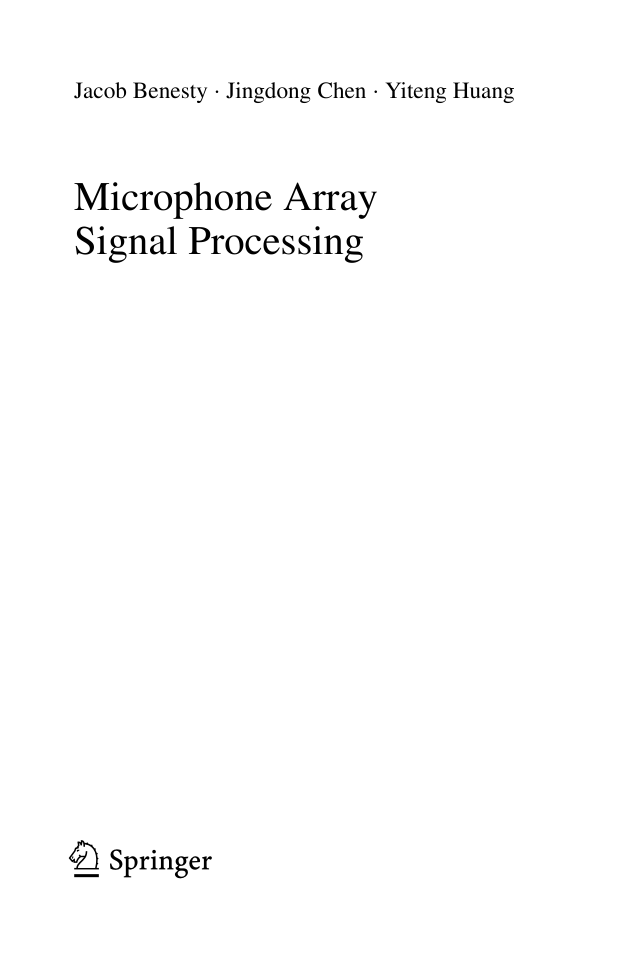
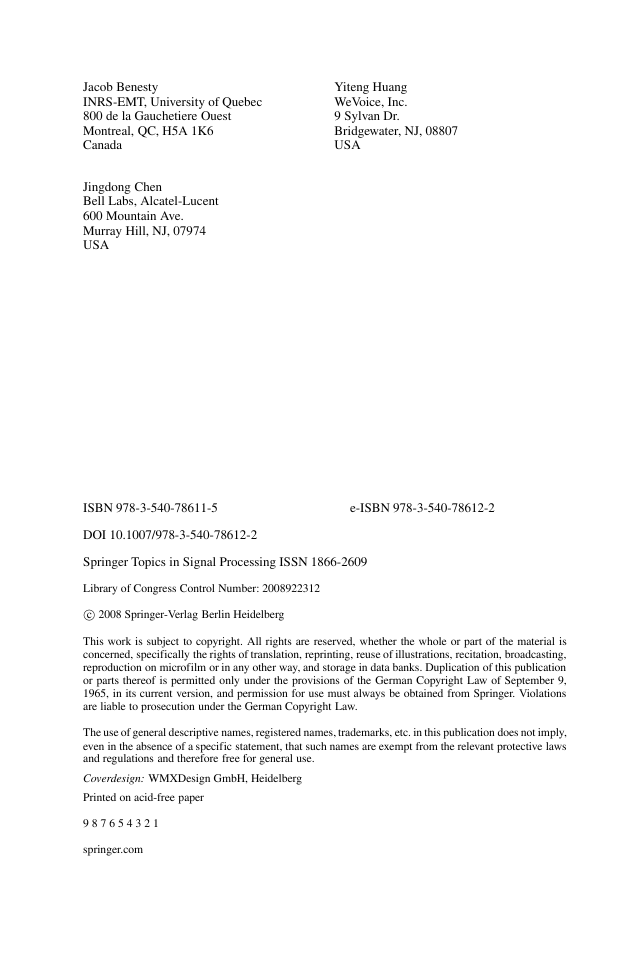
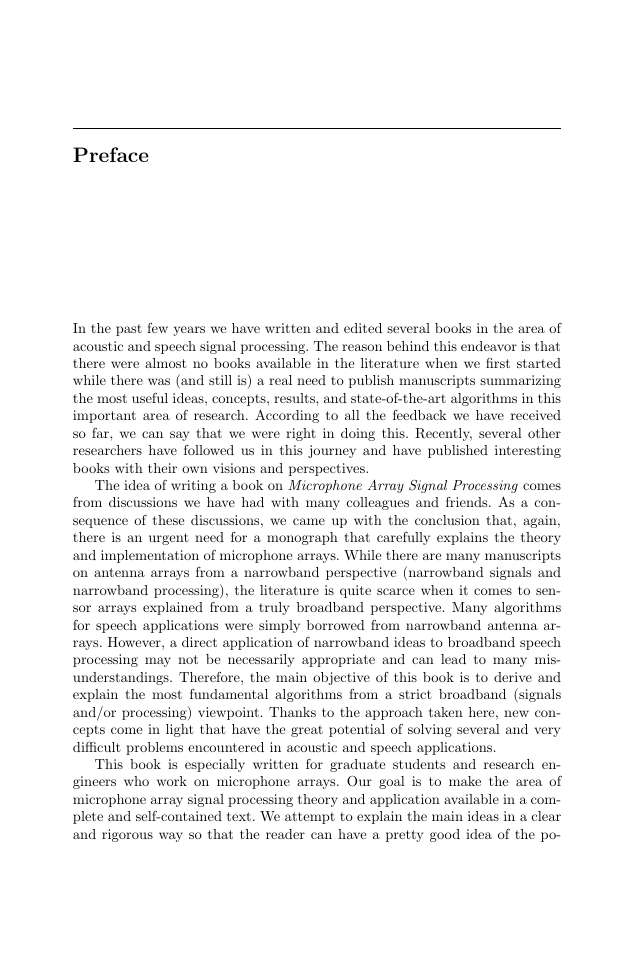
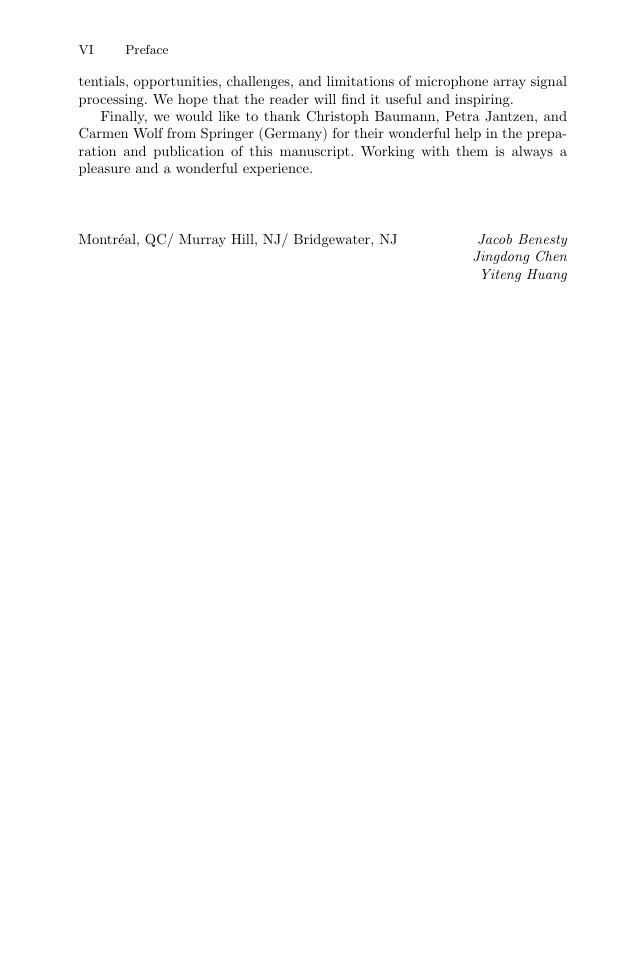
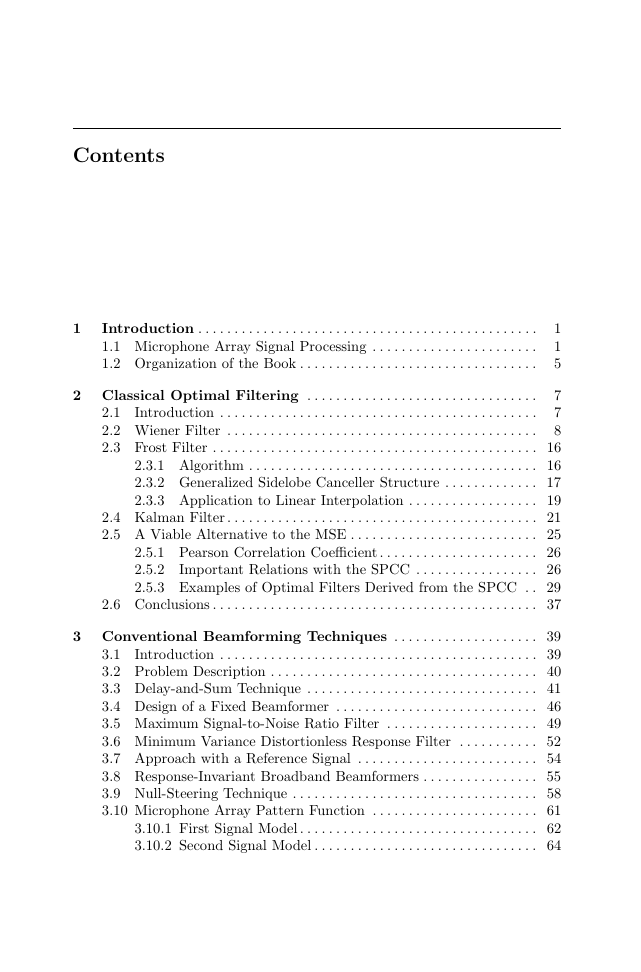








 2023年江西萍乡中考道德与法治真题及答案.doc
2023年江西萍乡中考道德与法治真题及答案.doc 2012年重庆南川中考生物真题及答案.doc
2012年重庆南川中考生物真题及答案.doc 2013年江西师范大学地理学综合及文艺理论基础考研真题.doc
2013年江西师范大学地理学综合及文艺理论基础考研真题.doc 2020年四川甘孜小升初语文真题及答案I卷.doc
2020年四川甘孜小升初语文真题及答案I卷.doc 2020年注册岩土工程师专业基础考试真题及答案.doc
2020年注册岩土工程师专业基础考试真题及答案.doc 2023-2024学年福建省厦门市九年级上学期数学月考试题及答案.doc
2023-2024学年福建省厦门市九年级上学期数学月考试题及答案.doc 2021-2022学年辽宁省沈阳市大东区九年级上学期语文期末试题及答案.doc
2021-2022学年辽宁省沈阳市大东区九年级上学期语文期末试题及答案.doc 2022-2023学年北京东城区初三第一学期物理期末试卷及答案.doc
2022-2023学年北京东城区初三第一学期物理期末试卷及答案.doc 2018上半年江西教师资格初中地理学科知识与教学能力真题及答案.doc
2018上半年江西教师资格初中地理学科知识与教学能力真题及答案.doc 2012年河北国家公务员申论考试真题及答案-省级.doc
2012年河北国家公务员申论考试真题及答案-省级.doc 2020-2021学年江苏省扬州市江都区邵樊片九年级上学期数学第一次质量检测试题及答案.doc
2020-2021学年江苏省扬州市江都区邵樊片九年级上学期数学第一次质量检测试题及答案.doc 2022下半年黑龙江教师资格证中学综合素质真题及答案.doc
2022下半年黑龙江教师资格证中学综合素质真题及答案.doc